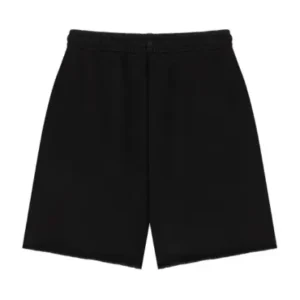In recent years, home radiant heating systems have gained significant attention as an efficient and comfortable method for home heating. These systems distribute heat directly to floors, walls, and ceilings, ensuring a more uniform and cosy environment. Unlike traditional methods that rely on air circulation, radiant heating offers a direct transfer of warmth, enhancing comfort and improving indoor air quality by reducing dust and allergens. As energy efficiency becomes a priority for many homeowners, the appeal of radiant heating systems continues to grow. Understanding these systems’ mechanics, costs, and benefits is crucial for those considering a more sustainable heating solution.
How Home-Radiant Heating Systems Work
Home-radiant heating systems use pipes or electrical elements installed beneath floors or within walls and ceilings. This method distributes heat evenly across surfaces, creating consistent warmth throughout the home. Unlike traditional heating systems, which rely on air circulation, radiant heating operates by directly transferring heat, thus reducing the presence of dust and allergens in the air.
These systems can be powered by various sources, including electricity, water, or air, each with distinct operational mechanisms. The absence of ductwork in radiant heating systems makes for quieter operation and reduces the potential for heat loss associated with forced-air systems. This results in a more efficient and comfortable home heating solution.
Radiant Heating System Cost Factors
Radiant heating system cost factors vary widely based on several key elements. Firstly, the type of system chosen significantly affects overall expenses. Hydronic systems, which use water to convey heat, tend to be more costly than electric systems due to the need for boilers, pumps, and additional plumbing work. The size of the installation area also directly impacts costs, as larger spaces require more materials and labour.
Labour expenses constitute a substantial portion of the total cost, as the installation of radiant heating systems is intricate and often requires skilled professionals. The home’s existing structure can either simplify or complicate the installation process. Retrofitting an older home typically costs more than installing the system in new construction. Material quality is another crucial factor; higher-quality pipes and heating elements ensure better performance and longevity but come at a premium price.
Additionally, the property’s geographic location can influence costs, with variations in labour rates and materials availability. Permitting and inspection fees may also apply, depending on local regulations. Homeowners should consider these factors when budgeting for radiant heating systems to ensure an accurate and comprehensive cost estimation.
Advantages of Domestic Radiant Heating Systems
Home-radiant heating systems are known for their energy efficiency, often consuming less energy than conventional heating methods. The direct heat transfer in these systems significantly reduces energy waste, contributing to lower utility bills. Enhanced comfort is another notable benefit, as radiant heating systems eliminate the hot and cold spots frequently found in forced-air systems, ensuring a consistent and pleasant temperature throughout the home.
Furthermore, radiant heating systems are advantageous for individuals with allergies or respiratory conditions since they minimise the circulation of dust and allergens, leading to improved indoor air quality. The silent operation of radiant heating systems adds to overall comfort by creating a tranquil living environment. Additionally, these systems offer design flexibility, as they do not require ductwork or vents, allowing for more aesthetic freedom in home decor.
Radiant heating components, such as high-quality pipes and heating elements, are also appealing because of their durability and longevity. Finally, the maintenance requirements for these systems are relatively low compared to other heating options, making them a practical and reliable choice for long-term use.
Hrv Home Ventilation System Overview
HRV (Heat Recovery Ventilation) systems are crucial in maintaining indoor air quality and home energy efficiency. By extracting stale air from inside the house and replacing it with fresh air from outside, HRV systems help to reduce humidity levels, prevent mould growth, and remove pollutants. One of the standout features of HRV systems is their ability to recover heat from the outgoing air and use it to warm the incoming air, thereby conserving energy and reducing heating costs.
These systems are particularly beneficial in homes with airtight construction, where natural ventilation is limited. HRV home ventilation system also work well with radiant heating systems, ensuring that the home remains warm while providing adequate ventilation. HRV systems contribute to overall home comfort and energy efficiency by maintaining a consistent and healthy indoor environment.
Their installation involves ductwork and a central unit, which can be seamlessly integrated into new or existing home structures. Regular maintenance of filters and fans ensures optimal performance, making HRV systems a practical choice for homeowners looking to enhance their living environment.
Installation Process of Radiant Heating Systems
Radiant heating systems provide efficient and comfortable warmth by directly heating floors, walls, or ceilings. The installation process requires careful planning and execution to ensure optimal performance. Below are the key steps involved in setting up a radiant heating system.
Property Assessment and System Selection
The first step involves evaluating the property to determine whether a hydronic (water-based) or electric system is more suitable. This decision influences factors such as floor structure, insulation, and heating needs. Hydronic systems are ideal for larger spaces, while electric systems work well in smaller areas or retrofits.
Preparing the Installation Area
The workspace must be prepared before installation. This may involve removing existing flooring, clearing subfloor debris, or accessing wall and ceiling cavities. Proper surface levelling is crucial to ensure even heat distribution and prevent damage to heating elements.
Installing Pipes or Heating Elements
For hydronic systems, a network of pipes is laid out in a precise pattern beneath the floor or within walls. These pipes connect to a boiler and pump system for hot water circulation. Electric systems use heating mats or cables, which are secured before being connected to the power supply.
Insulation and Heat Retention
Proper insulation beneath the heating system prevents heat loss and improves efficiency. Insulation boards or reflective barriers are often installed to direct heat upward, ensuring maximum warmth in living spaces rather than losing it to the ground below.
Flooring Restoration and System Testing
Once pipes or cables are installed, the flooring is reinstalled with materials compatible with radiant heat, such as tile or engineered wood. The system is then tested for functionality, calibrated for even heating, and adjusted to meet the desired temperature settings.
Hrv System Cost Considerations
Several factors influence the cost of HRV (Heat Recovery Ventilation) systems. The home’s size and the specific ventilation requirements are critical in determining the overall expense. Larger homes generally necessitate more extensive ductwork and more powerful units, which can increase costs. The complexity of the installation process, such as the need to retrofit existing structures, can also add to the expense.
Additionally, the quality and efficiency of the HRV unit selected impact the cost; higher-end models with advanced features, such as enhanced filtration and higher heat recovery efficiency, are typically more expensive. Labour costs for professional installation can vary based on geographic location and the project’s complexity. Furthermore, maintenance requirements and the potential need for periodic filter replacements should be factored into the long-term cost considerations.
Comparing HRV system cost with other ventilation options, such as ERV (Energy Recovery Ventilation) systems, can provide a broader perspective on cost-effectiveness and suitability for specific home environments. When evaluating the total cost of an HRV system, it is essential to consider both the initial investment and the ongoing operational costs.
Maintenance Tips for Radiant Heating Systems
Proper home radiant heating system maintenance is vital to ensure their efficiency and longevity. To prevent potential issues, the system should be regularly inspected for leaks and electrical connections checked. Monitoring the water pressure and periodically bleeding air from the pipes for hydronic systems helps maintain optimal performance. Ensuring the thermostat is accurately calibrated is also essential to keep the system running smoothly.
Homeowners should be aware of any signs of uneven heating or unusual noises, which may indicate underlying problems that require professional attention. Scheduling annual inspections by qualified technicians can identify and address minor issues before they escalate. Maintaining a clean environment around the heating components, free from dust and debris, also supports efficient operation.
Proper insulation of floors, walls, and ceilings is also crucial to maximise the system’s effectiveness. Following these maintenance practices helps to ensure that the radiant heating system continues to provide a comfortable and energy-efficient home environment.
Combining Radiant Heating with HRV Systems
Combining home-radiant heating systems with HRV systems creates a harmonious balance between heating efficiency and indoor air quality. The integration of these two systems allows for consistent warmth while ensuring the continuous exchange of fresh air. HRV systems work by recovering heat from the outgoing stale air and transferring it to the incoming fresh air, which complements the steady warmth provided by radiant heating. This process significantly reduces energy wastage, as the recovered heat contributes to the home’s overall heating, thereby lowering energy bills.
The combination is particularly beneficial in modern, airtight homes with limited natural ventilation. By ensuring a continuous flow of fresh air, HRV systems prevent the buildup of humidity and pollutants, which radiant heating alone cannot address. This synergy also supports a healthier living environment by minimising allergens and improving air quality. The absence of ductwork in radiant heating systems, coupled with the heat recovery feature of HRV systems, ensures that both systems operate efficiently without unnecessary heat loss.
Additionally, the quiet operation of both systems enhances the home’s overall comfort. Properly integrating these systems requires careful planning and professional installation to optimise their combined benefits. Regular maintenance of both systems ensures long-term performance and energy efficiency, making the combination of radiant heating and HRV systems a highly effective solution for modern homes.
Conclusion
Upgrading a home radiant heating systems can significantly enhance comfort and energy efficiency. It provides even warmth throughout your living spaces, reduces dust circulation, and can lower utility costs in the long run. While it requires an initial investment, the benefits far outweigh the costs in terms of both comfort and energy savings. Homeowners should carefully evaluate their options, considering installation costs, system maintenance, and overall home needs. Properly maintained, a radiant heating system can last for decades, offering a consistent, reliable, and eco-friendly heating solution for years.
FAQ’s
What is a home radiant heating systems?
Unlike traditional systems that warm the air, a home radiant heating systems warms a space by directly heating the floors, walls, or ceilings. This method provides even heat distribution, reducing the risk of hot or cold spots within a room.
How does radiant heating work?
Radiant heating systems use electrical cables or water-filled pipes installed under the floor, walls, or ceiling. These components heat the surfaces, which radiates into the room, warming the people and objects inside rather than just the air.
Is radiant heating energy-efficient?
Yes, radiant heating is highly energy-efficient. It uses lower temperatures to achieve a comfortable environment and eliminates heat loss associated with traditional forced-air systems. Additionally, the heat is directed at the floor, where body heat is most needed, further improving efficiency.
Can I install radiant heating in an existing home?
Yes, radiant heating can be installed in most homes. However, retrofitting can be more complex and expensive than installing it in new construction. Depending on the chosen system, it may require lifting floors or modifying walls or ceilings.
How much does it cost to install radiant heating?
Installation costs can vary depending on the type of system (electric or hydronic), your home’s size, and the complexity of the installation. On average, costs can range from $6 to $20 per square foot, with hydronic systems generally being more expensive due to their setup requirements.
| Related Business Listings |
| Contact Directory |
| Local Business Profiles |








